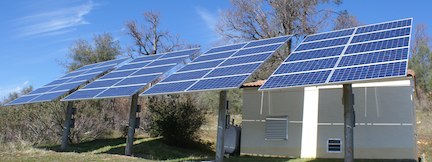We all have things that appeal to our interest. My background in geometry/math/etc isn't as much as these other fellows, and in CAD/computers/3D modelling not as much as yours.
Just trying to learn something here.
I know there has been a lot of back and forth on this thread so this may have been overlooked in the shuffle:
Reviving this thread just out of curiosity. The neighbors have cut down some trees so I don't need to worry about it.
But for the sake of academics--how do you figure these angles?
But for the sake of academics--how do you figure these angles?
So let's not throw out the baby with the bathwater ! ! !

I use 3D modelling software to figure out the equivalent Azimuth/Tilt plane for Poa irradiance calculations created when a panel is oriented with azimuth, tilt, and "sideways tilt", as you called it. More specialized software (incorporating the solar path) is necessary to determine how to lay out the panels to avoid external and self-shading in the compound orientation.
NREL's SAM (System Advisor Model) has a 3d shade modelling engine... it is free, but takes some time to learn.
NREL's SAM (System Advisor Model) has a 3d shade modelling engine... it is free, but takes some time to learn.

Leave a comment: